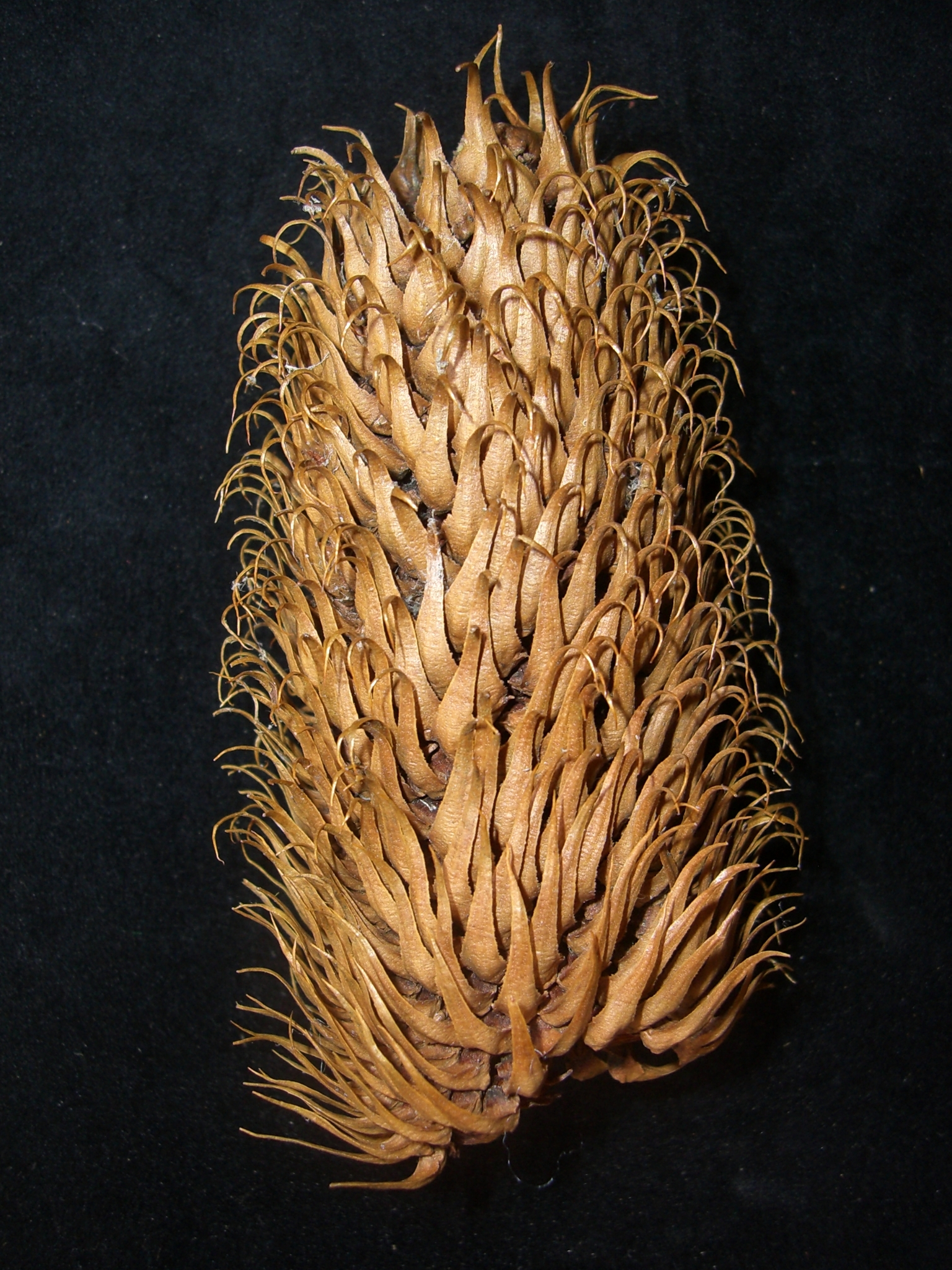
A broadly domed, wrinkly barked tree to about 20 m tall. Branches upwardly curved, mostly in whorls of 5, the whole tree displaying an extraordinary symmetry. Leaves stout, triangular, overlapping, 3-5 cm long, 1-2 cm wide with sharp terminal prickles. Male cones borne just behind the branch tips, 8-15 cm long in groups of 1-6. Female cones solitary, erect, more or less cylindrical, usually axillary, 10-13 cm long, 5-6 cm wide, usually produced Oct.-Dec. and said to take 2-3 years to mature. Seed slightly flattened, wingless.
Grows best in moist cool soils and is not really suited to the climate of south-eastern Australia. Occasionally offered in the nursery trade but more widely grown in the 19th century.
Chile & Argentina (S Andes).
A timber tree in S America where there is concern for the species through over-exploitation. The seeds are edible either raw or when roasted like chestnuts, or boiled.
Domed canopy; rigid broad-based leaves; cf. A. bidwillii.
NSW: Orange (Uniting Church, Spring Hill Village near airport). VIC: Dandenong (Mount Dandenong Arboretum); Daylesford (Bot. Gds); East Trentham; Kyneton (Bot. Gds, poor condition); Mt Macedon ('Alton' and other Mt Macedon properties); Springmount ('The Firs'). TAS: West Takone (19 km W of Murchison Hwy, c. 70 years old in 1990).
Araucaria muelleri (Royal Bot. Gds, Melbourne, Hopetoun Lawn) is similar to A. araucana but has shorter leaves, 2.5-3.0 cm long, and longer male cones.
A. angustifolia (Bertoloni) Kuntze from N Argentina and S Brazil has a smooth trunk, flat canopy and horizontal branches with tufts of foliage at the tips; the leaves are similar to those of A. bidwillii but stiffer, narrower, bluish below; the leaves are also narrower than those of A. araucana and the male cones long, cylindrical and pendulous, not club-shaped and erect as in A. araucana. Young trees of A. angustifolia several metres tall may be seen at the Otway Ridge Arboretum, Victoria.
Source: (1995). Araucariaceae. In: . Horticultural Flora of South-eastern Australia. Volume 1, Ferns, conifers & their allies. The identification of garden and cultivated plants. University of New South Wales Press.
